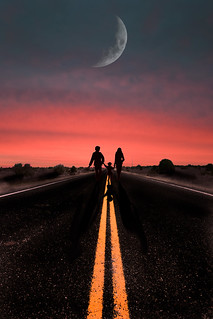
Speaker: Emily Guhde, NCLIVE
“We’ve Got Your Number: Making Usage Data Matter” is the project they are working on. What is a good target cost per use for their member libraries? They are organizing this by peer groups. How can the member libraries improve usage? They are hoping that other libraries will be able to replicated this in the future.
Speaker: Francis Kayiwa, UIC
He is a server administrator with library training, and wanted to be here to understand what it is his folks are coming back and asking him to do. Cross-pollinate conferences — try to integrate other kinds of conferences happening nearby.
Speaker: Annette Bailey, Virginia Tech
Co-developed LibX with her husband, now working on a new project to visualize what users are clicking on after they get a search result in Summon. This is a live, real-time visualization, pulled from the Summon API.
Speaker: Angie Rathnel, University of Kansas
Have been using a SAS called Callisto to track and claim eresources. It tracks access to entitlements daily/weekly, and can check to make sure proxy configurations are set up correctly.
Speaker: Cindy Boeke, Southern Methodist University
Why aren’t digital library collections included with other library eresources on lists and such (like the ubiquitous databases A-Z page)?
Speaker: Rick Burke, SCELC
SIPX to manage copyright in a consortial environment. Something something users buying access to stuff we already own. I’m guessing this is more for off-campus access?
Speaker: Margy Avery, MIT Press
Thinking about rich/enhanced digital publications. Want to work with libraries to make this happen, and preservation is a big issue. How do we catalog/classify this kind of resource?
Speaker: Jason Price, Claremont Colleges
Disgruntled with OpenURL and the dependency on our KB for article-level access. It is challenging to keep our lists (KBs) updated and accurate — there has to be a better way. We need to be working with the disgrundterati who are creating startups to address this problem. Pubget was one of the first, and since then there is Dublin Six, Readcube, SIPX, and Callisto. If you get excited about these things, contact the startups and tell them.
Speaker: Wilhelmina Ranke, St. Mary’s University
Collecting mostly born digital collections, or at least collections that are digitized already, in the repository: student newspaper, video projects, and items digitized for classroom use that have no copyright restrictions. Doesn’t save time on indexing, but it does save time on digitizing.
Speaker: Bonnie Tijerina, Harvard
The #ideadrop house was created to be a space for librar* to come together to talk about librar* stuff. They had a little free library box for physical books, and also a collection of wireless boxes with free digital content anyone could download. They streamed conversations from the living room 5-7 times a day.
Speaker: Rachel Frick
Digital Public Library of America focuses on content that is free to all to create a more informed citizenry. They want to go beyond just being a portal for content. They want to be a platform for community involvement and conversations.

